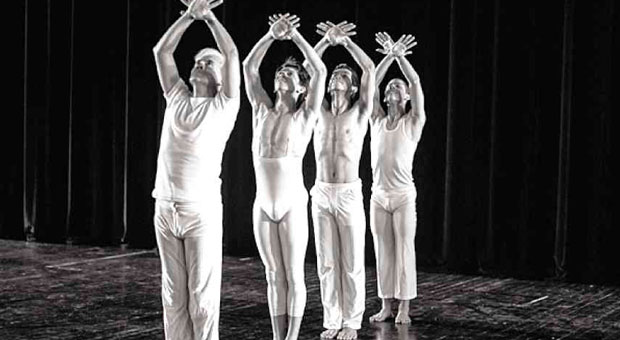
GENERATIONS: Nonoy Froilan, Jean Marc Cordero, Biag Gaongen, Joseph Manguad are the featured dancers in this documentary.
Once the turf of women, ballet and modern dance in the Philippines have spawned amazing danseurs in the last decade, as well as their greater public acceptance.
Inspired by this phenomenon, the documentary, “MANanayaw,” offers a peek into the world of male dancing. To be aired on Nov. 2, Sunday, at 9:30 p.m. on GMA News TV-11, “MANanayaw,” profiles four danseurs—flaming heterosexuals all—from Ballet Philippines (BP), in various stages in their individual lives.
The silver-haired, former premier danseur noble (a dancer of great nobility), Nonoy Froilan now coaches and produces dance videos. The thirty-something modern dancer Biag Gaongen, who has worked abroad, has gone into choreography after being sidelined by a knee injury. BP principal dancer Jean Marc Cordero candidly reveals his ignorance of the ballet world and how his perception of dance changed in BP as he strives for mastery of technique. Despite his natural gifts, upcoming danseur Victor Manguad admits his insecurities about life and dance.
The documentary also features other BP alumni on the challenges of being male dancers. BP founder Eddie Elejar talks about being stigmatized as a “sissy.” Likewise, choreographer Dwight Rodrigazo recounts how his family initially disapproved of his career move and thought he was gay. BP soloist Cyril Fallar shows how dancers are injury- and blister-prone.
Then, the paradoxes: Froilan finds it bitterly ironic that getting a standing ovation during his final tribute coincided with Meralco cutting off electricity at his home for unpaid bills. Cordero restates the notion that a male dancer needs more physical stamina than an athlete. In reality, most dancers don’t make time for regular cross-training at the gym or yoga/Pilates studio.
Daily travails
The documentary chronicles BP’s tour in Dumaguete, where they presented “Rock Supremo,” a biographical rock dance on Andres Bonifacio. As in a reality show, it portrays their travails—the delayed flight, the cargo of sets (including the linoleum) that were boarded on a later flight, and the makeshift props. BP artistic director Paul Morales has to find solutions to the daily dilemmas.
Between shows at the Silliman University, the dancers sleep on the floor in the dressing room, looking like ravaged refugees. Upon returning to Manila, their skin is dehydrated and their lips are dry, yet the dancers keep their spirits high.
One of the documentary’s highlights is a soulful solo by Gaongen, who cuts a fervent and fluid figure against the landscape. In the end, the four danseurs come together in a dance. We only wish that the production team paid attention to details, such as controlling Nonoy’s girth with Spanx or a slimming belt.
Best angles
Nevertheless, “MANanayaw” draws the audience for its compelling realism and comprehensive perspective of the local dance world. It won the Special Jury Prize at the Cine Totoo Awards, the first Philippine International Documentary Festival presented by GMA News TV. The young team is led by director-editor Rafael Froilan, who has been guided by his parents Nonoy Froilan and choreographer Edna Vida, to create meaty content and to obtain the best angles for dance. Director of photography Chris Yuhico captures the dancers’ resilience and humor amid their unglamorous, shoddy working conditions.
Hey, guys—do you still want to be dancers?